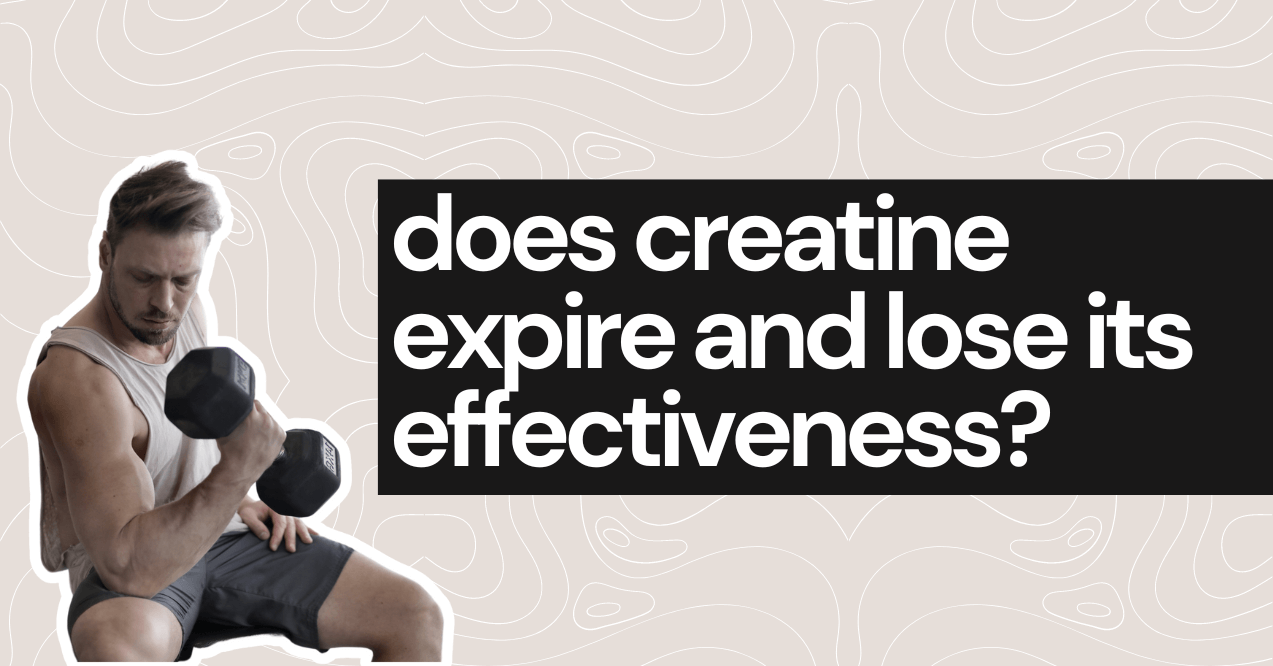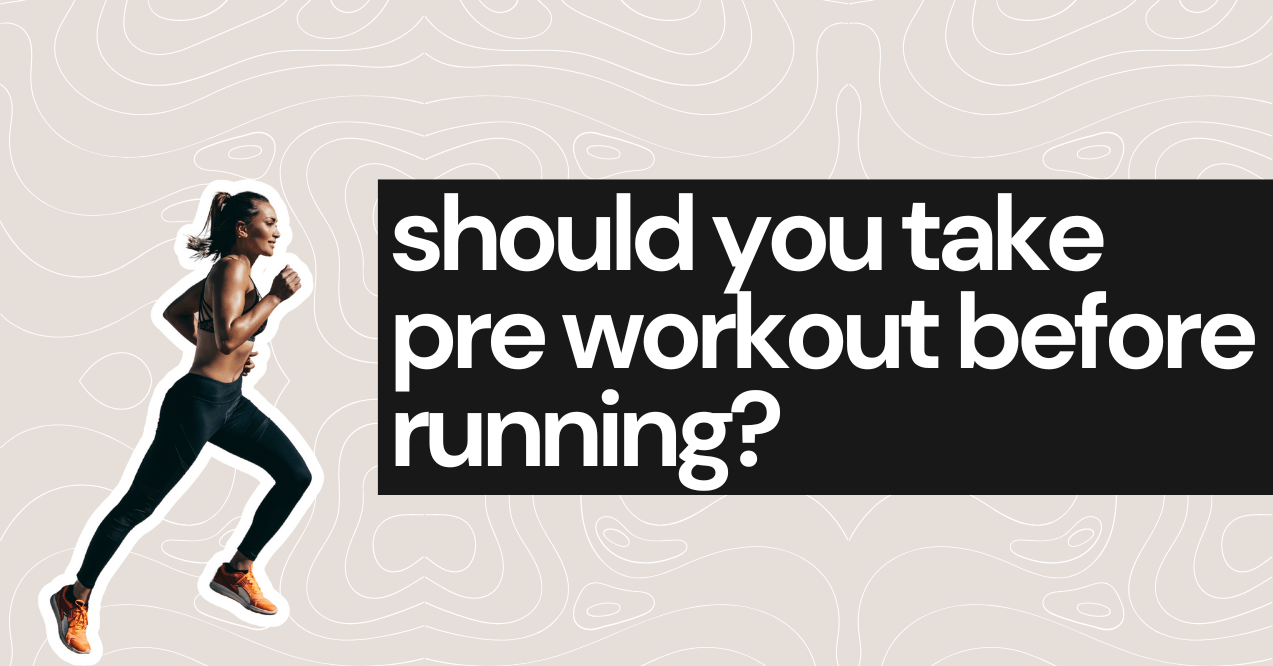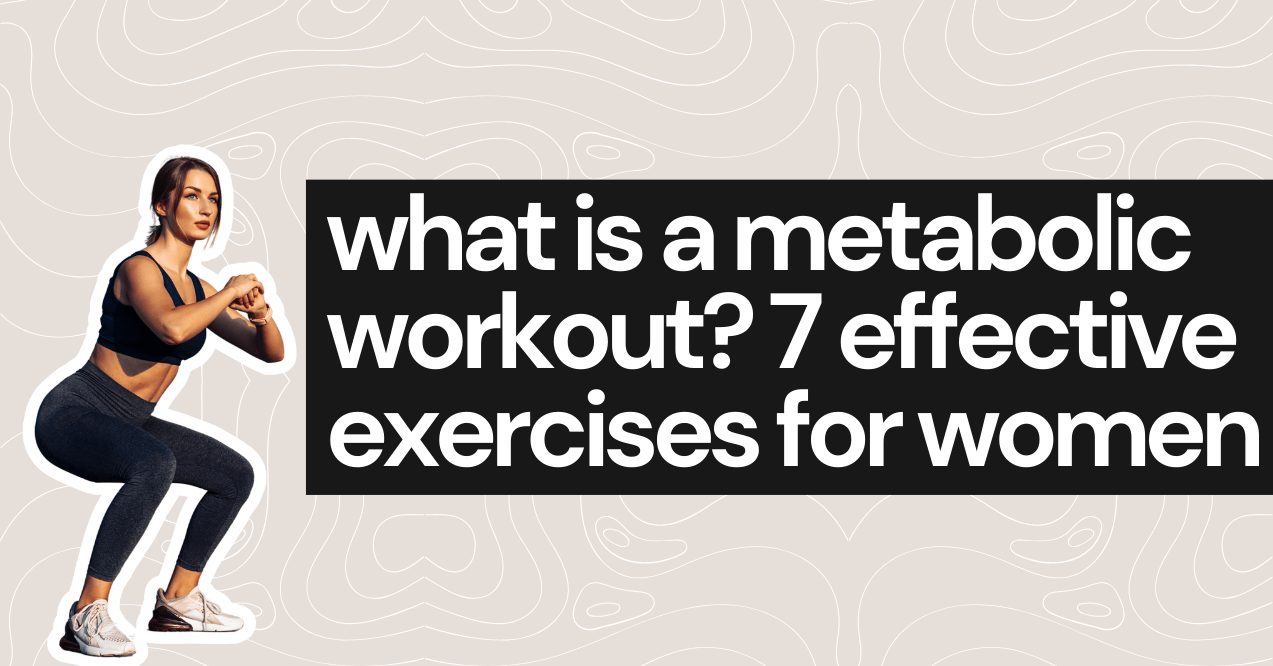health
by trumeta | March 12, 2024
7 Best Somatic Exercises (Free Workout Plan)
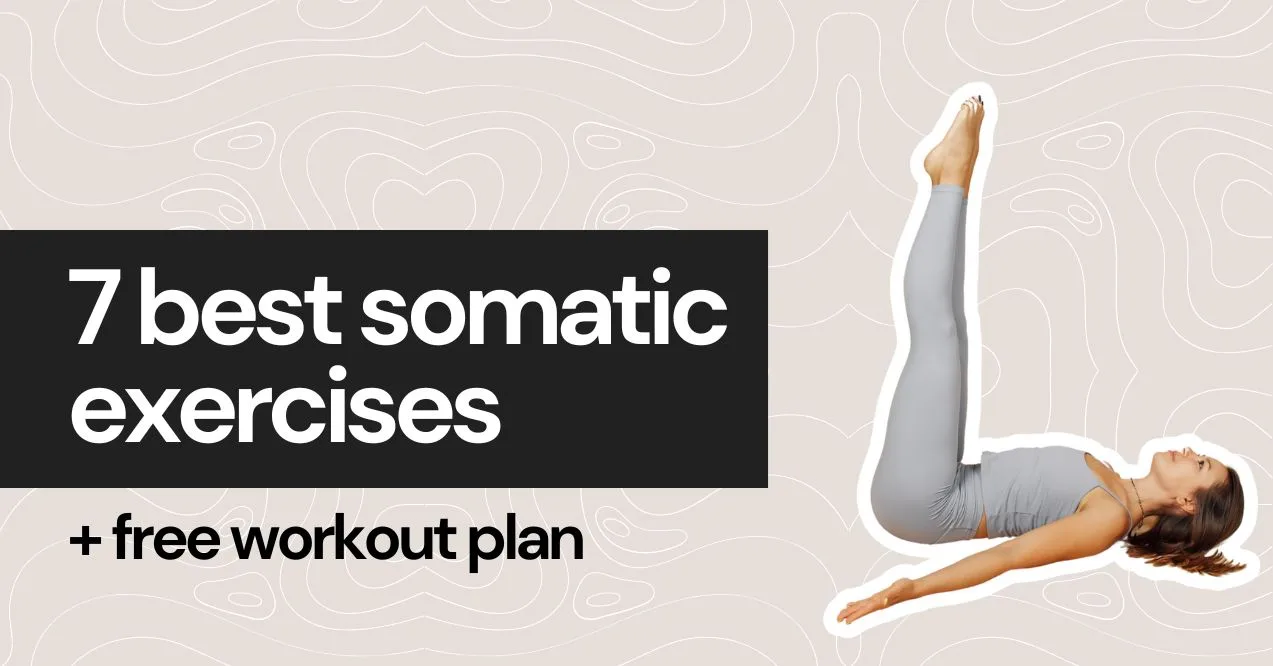
Somatic exercises are a transformative approach to reconnecting with your body. These exercises combine physical movements with mental awareness to release tension[1] and enhance overall wellness. By focusing on internal control, somatic exercises guide your body back to its natural, tension-free state, improving both mental and physical health.
Somatic movement exercises are gaining popularity, especially among older adults, as they offer a gentle and effective way to maintain and regain mobility. Rather than just building muscle or endurance, these exercises re-educate the body to move more efficiently.
In this blog, we’ll discuss the benefits and science behind somatic exercises and provide a somatic workout plan. Our goal is to make this knowledge accessible to everyone, regardless of age or fitness level. We’ll provide practical, easy-to-follow guidance that you can integrate into your daily routine.
What Are Somatic Exercises? + Benefits
Somatic exercises are a series of movements designed to enhance body awareness and neuromuscular control[2], focusing on the internal perception and experience of the practitioner. By emphasizing mindful movements, they aim to release tension, improve mobility, and increase bodily coordination and balance.
Stress Reduction
Somatic exercises play a significant role in stress reduction by promoting a deep sense of bodily awareness and relaxation. These exercises encourage you to tune into your body’s sensations, shifting focus from external stressors to internal experiences. This mindful engagement helps to break the cycle of stress-tension in the body.
By consciously relaxing and releasing muscular tension through gentle, controlled movements, somatic exercises foster a state of calm and balance in the nervous system. This physiological change not only reduces stress levels but also improves mental clarity and emotional resilience. In the following section, we will explore the intricacies of how somatic exercises aid in alleviating stress and enhancing overall tranquility.
Pain Relief
Somatic exercises are particularly effective in providing pain relief. They work by addressing the root cause of pain, which often lies in habitual muscle tension and poor movement patterns. Through gentle and mindful movements, these exercises help in retraining the brain to release chronic muscle tightness, leading to a significant reduction in discomfort. This process of neuromuscular re-education enhances the body’s natural alignment and movement efficiency, thereby alleviating pain that results from muscular imbalances and strain.
As you practice somatic exercises, you’ll learn to identify and release tension in specific areas of the body, which is especially beneficial for those suffering from neck, back, or joint pain. The focus on internal experience allows for a deeper understanding of how your body holds and manages stress and strain, leading to more effective and personalized pain management strategies.
Improved Flexibility and Mobility
Somatic exercises significantly contribute to improved flexibility and mobility. These exercises work by retraining the nervous system to release chronic muscular tension, a common barrier to full range of motion. By gently guiding the body through movements that increase awareness of how we hold and release tension, somatic exercises encourage muscles to elongate and relax. This relaxation not only improves flexibility but also enhances overall mobility.
The key lies in the exercises’ focus on slow, controlled movements that allow the brain to reset muscle length and tension. This mindful approach helps in breaking the cycle of muscle tightness and joint stiffness, leading to a more fluid and graceful range of motion. Regular practice leads to a body that moves more freely, with less effort and more coordination.
Enhanced Body Awareness
Enhanced body awareness is a fundamental benefit of somatic exercises. These exercises cultivate an acute sense of bodily perception, enabling individuals to become more attuned to their physical sensations, movements, and posture. This heightened awareness allows for a deeper understanding of how the body operates and responds to various stimuli, leading to more mindful and efficient movement patterns.
By engaging in slow, deliberate motions that focus on the internal experience, practitioners develop a refined sense of how different parts of their body are interconnected. This awareness extends beyond the exercise sessions, influencing how one sits, stands, moves, and even reacts to stress. Enhanced body awareness helps in identifying and correcting imbalances and tension that could lead to discomfort or injury.
Better Posture
Better posture is a key benefit of practicing somatic exercises. These exercises focus on releasing tension and realigning the body, leading to a natural and more effortless upright posture. By increasing body awareness, somatic exercises help individuals recognize and correct postural habits that may contribute to discomfort or imbalance.
The gentle, mindful movements of somatic exercises encourage the body to find its optimal alignment. This process involves re-educating the muscles to support the body efficiently, without unnecessary strain. As tension in the neck, shoulders, and back is released, the spine aligns more naturally, allowing for an improved posture. This not only enhances appearance but also contributes to better breathing, reduced strain on joints, and overall physical health.
Reduction in Anxiety and Depression Symptoms
The practice of somatic exercises also plays a significant role in the reduction of anxiety and depression[3] symptoms. These exercises emphasize a mind-body connection, fostering a sense of calm and presence that can be particularly beneficial for those experiencing mental health challenges. By focusing on gentle, mindful movements, individuals engage in a form of embodied meditation, which can help to quiet the mind and alleviate symptoms of anxiety and depression.
Through somatic exercises, practitioners learn to release physical tension, which is often linked to emotional stress. Additionally, the increased body awareness and control gained through these exercises can empower individuals, giving them a sense of agency over their physical and emotional states.
Improved Sleep Quality
Somatic exercises may have a profound impact on improving sleep quality. By reducing physical tension and calming the mind, these exercises prepare the body for a more restful and rejuvenating sleep. When the body is tense or stressed, it can be challenging to fall asleep or stay asleep throughout the night. Exercises[4], with their focus on releasing muscle tightness and fostering a state of relaxation, counteract these issues.
Through mindful and controlled movements, these exercises help to downregulate the nervous system, shifting it away from the stress-response mode and towards a more relaxed state. This relaxation response is crucial for initiating and maintaining deep, restorative sleep. As the body learns to release tension more effectively, sleep becomes more peaceful and uninterrupted.
What Are Somatic Exercise Techniques?
Now we will delve deeper into the fascinating world of somatic exercise techniques, specifically focusing on grounding, breathwork, and body scanning. Each of these techniques plays a unique role in fostering mind-body integration[5]. Grounding establishes a stable connection with the present, breathwork facilitates emotional balance and stress relief, while body scanning heightens internal awareness. We’ll explore how these practices contribute to improved mental clarity, pain reduction, and overall well-being, offering a comprehensive understanding of their benefits and applications.
Grounding Exercises
Grounding[6] exercises are a cornerstone of somatic practices, designed to reconnect individuals with their physical presence and the present moment. These exercises involve techniques that encourage a sense of stability and rootedness in the body. The basic principle is to become more aware of your physical connection to the ground, whether it’s through your feet while standing, your sit bones while seated, or any other point of contact.
A common grounding exercise might include standing or sitting while consciously feeling the weight of your body pressing down against the floor or chair. This awareness helps to anchor the mind in the here and now, drawing attention away from racing thoughts or external stressors.
Breathwork
Breathwork[7], an integral component of somatic exercises, involves conscious and intentional control of breathing to influence mental, emotional, and physical states. It’s based on the premise that the way we breathe directly impacts our overall well-being.
In somatic practices, breathwork is used to relax the body, calm the mind, and manage stress. Techniques may vary from deep abdominal breathing to more structured practices like paced breathing or alternate nostril breathing. These methods help to regulate the body’s fight-or-flight response, often triggered by stress, by activating the parasympathetic nervous system – the part responsible for rest and relaxation.
Body Scanning
Body scanning is a mindful somatic exercise that involves slowly and attentively moving your focus through different parts of the body. The purpose is to observe and connect with any sensations present, whether it’s tension, relaxation, warmth, or coolness. This practice encourages a deep level of bodily awareness, helping you to identify areas of discomfort or stress that you might typically overlook.
During a body scan, you typically lie down or sit comfortably and begin by focusing on the breath to induce a state of relaxation. Then, you mentally scan your body, starting from the toes and moving upwards, or vice versa. As you focus on each body part, you’re invited to notice without judgment. The key is awareness, not change. However, this awareness often leads to a natural release of tension[8].
Progressive Muscle Relaxation (PMR)
Progressive Muscle Relaxation (PMR) is a somatic exercise technique that involves sequentially tensing and then relaxing different muscle groups in the body. Developed by Dr. Edmund Jacobson[9] in the 1920s, it’s designed to help individuals become more aware of physical sensations associated with tension and relaxation. This awareness is key in reducing overall stress and anxiety levels, as well as in managing physical discomfort.
The process of PMR typically begins with a focus on the breath to establish a baseline of relaxation. Then, you systematically tense a muscle group, such as your hands or forearms, for a few seconds, and release the tension, observing the contrast between the two states. This is repeated throughout various muscle groups in the body, often starting from either the top of the head down to the toes, or vice versa.
Gentle Movement Practices
Gentle movement practices form a core part of somatic exercises, focusing on slow, mindful movements that promote physical and mental relaxation. Unlike rigorous exercise routines, these practices center on gentle, flowing movements that are kind to the body, making them accessible to people of all ages and fitness levels.
These practices may include activities like slow stretching, Tai Chi, or gentle yoga sequences. The movements are designed to be fluid and non-straining, encouraging the body to release tension naturally[10] and gradually. By moving slowly and with awareness, practitioners can better understand how their body feels and functions, enhancing body awareness and control.
Gentle movement practices are particularly beneficial for improving flexibility, balance, and coordination. They also play a significant role in stress reduction, as the mindful nature of these movements promotes a state of calm and present-moment awareness. This can be especially helpful for those dealing with anxiety or chronic stress.
Best Somatic Exercises You Should Try (Full Workout Plan)
Dive into our somatic exercises plan, featuring seven transformative exercises designed to enhance body awareness, reduce stress, and improve flexibility. This carefully curated program combines grounding, breathwork, body scanning, and gentle movement practices, ensuring a holistic approach to your physical and mental well-being. Get ready to embark on a journey of self-discovery and rejuvenation!
1. Diaphragmatic Breathing
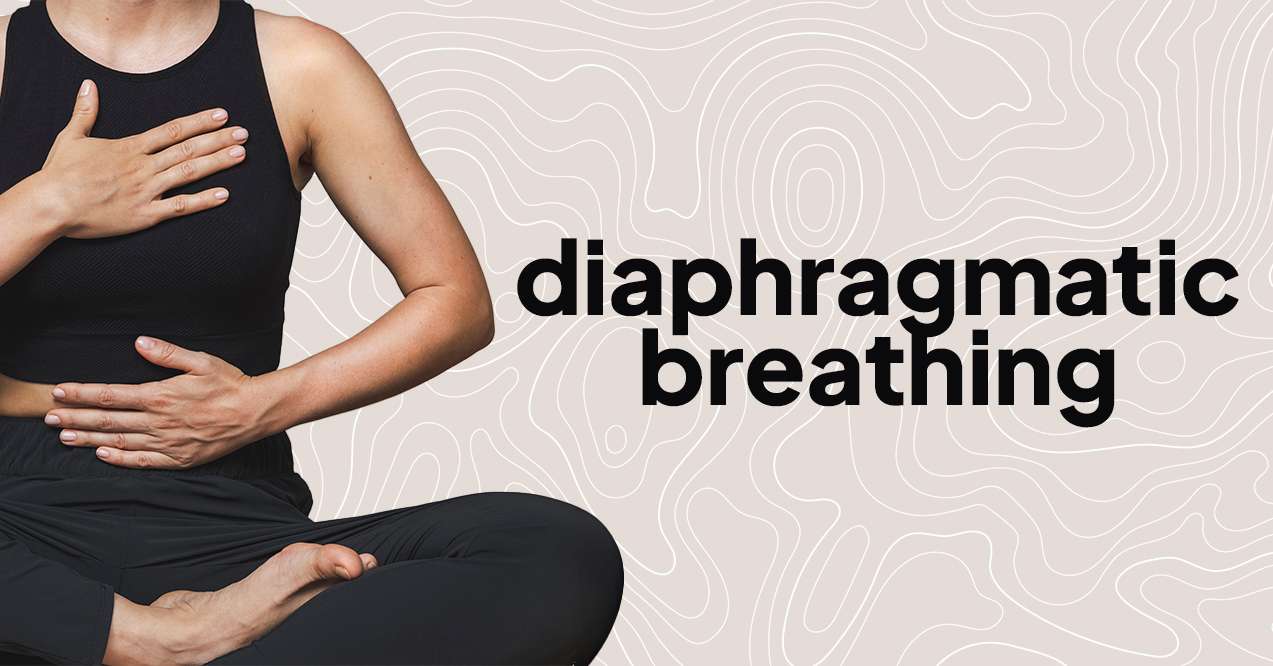
Diaphragmatic breathing[11] engages the diaphragm, a large muscle at the base of the lungs, enhancing its function and improving respiratory efficiency. This technique increases oxygen intake and promotes more efficient carbon dioxide expulsion. When practiced regularly, it activates the body’s relaxation response, potentially reducing the levels of stress hormones in the bloodstream.
This shift from chest-dominant to diaphragmatic breathing stimulates the parasympathetic nervous system, which is responsible for rest and digestion, leading to decreased stress and lower heart rate. This type of breathing is not only beneficial for stress reduction but also for improving overall respiratory function and cardiovascular health.
Here’s a step-by-step guide to practice diaphragmatic breathing:
- Positioning – Sit or lie down comfortably. Place one hand on your abdomen, below the ribs, and the other on your chest.
- Inhale Deeply – Breathe in slowly through your nose, feeling your abdomen rise. The hand on your chest should remain relatively still.
- Exhale Gently – Slowly exhale through your mouth or nose, feeling your abdomen fall.
- Repeat – Continue for several minutes, focusing on the abdominal movements.
2. Basic Grounding Exercise
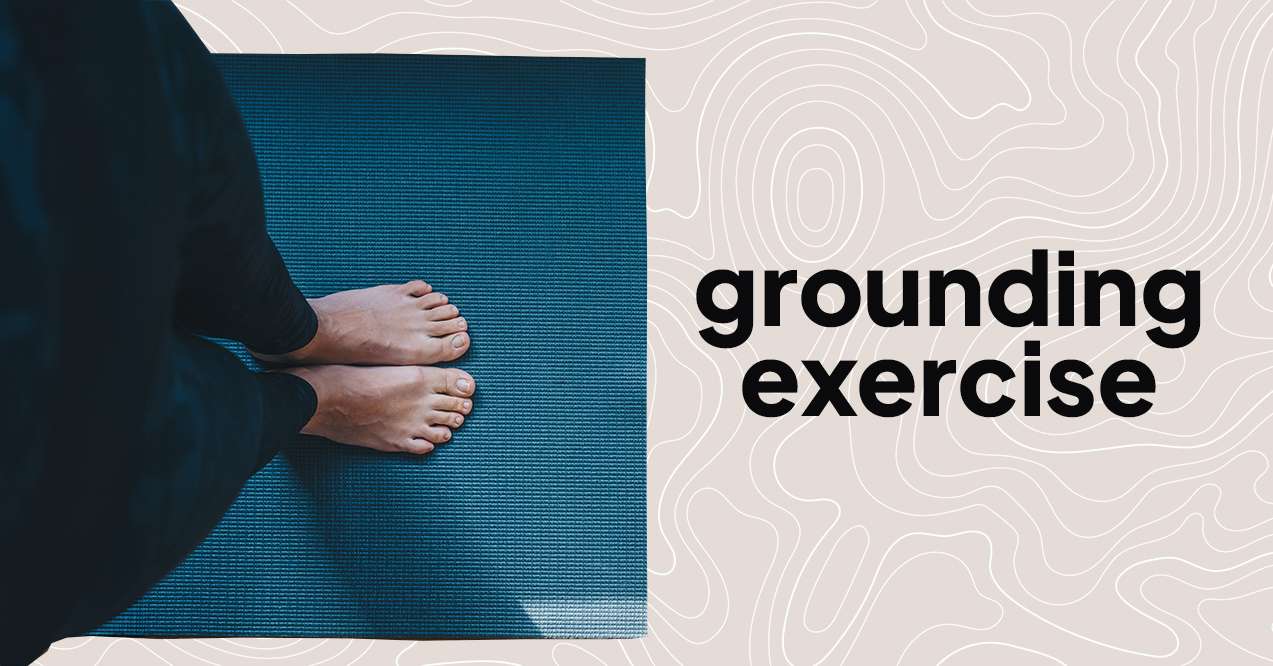
Grounding techniques, as explored in various studies[12], are effective in promoting overall well-being and inducing relaxation. By centering attention on physical sensations and points of contact, these exercises effectively bring the mind into the present moment. This shift in focus helps in significantly reducing stress, anxiety, and rumination.
Here are some Basic Grounding Exercise Instructions:
- Find a Comfortable Position – Stand, sit, or lie down in a relaxed position. If sitting or standing, place your feet flat on the ground.
- Focus on Your Feet – Close your eyes and shift your attention to your feet. Feel the contact they make with the ground. Notice the pressure, temperature, and any sensations.
- Hands Contact – If seated, place your hands on your thighs or a table. Notice the sensations where your hands touch these surfaces – the texture, temperature, and any feelings of pressure.
- Deep Breathing – Incorporate deep, slow breaths as you maintain your focus on these physical points of contact. Inhale through your nose and exhale through your mouth.
- Expand Awareness – Gradually expand your awareness from these points of contact to the rest of your body. Notice any tension and imagine it flowing down through your body, out through your feet or hands, grounding into the earth.
- Stay Present – If your mind wanders, gently bring your attention back to the physical sensations in your feet and hands.
- Conclude – Spend a few minutes in this state, then slowly open your eyes and return to your surroundings.
3. Pelvic Tilts
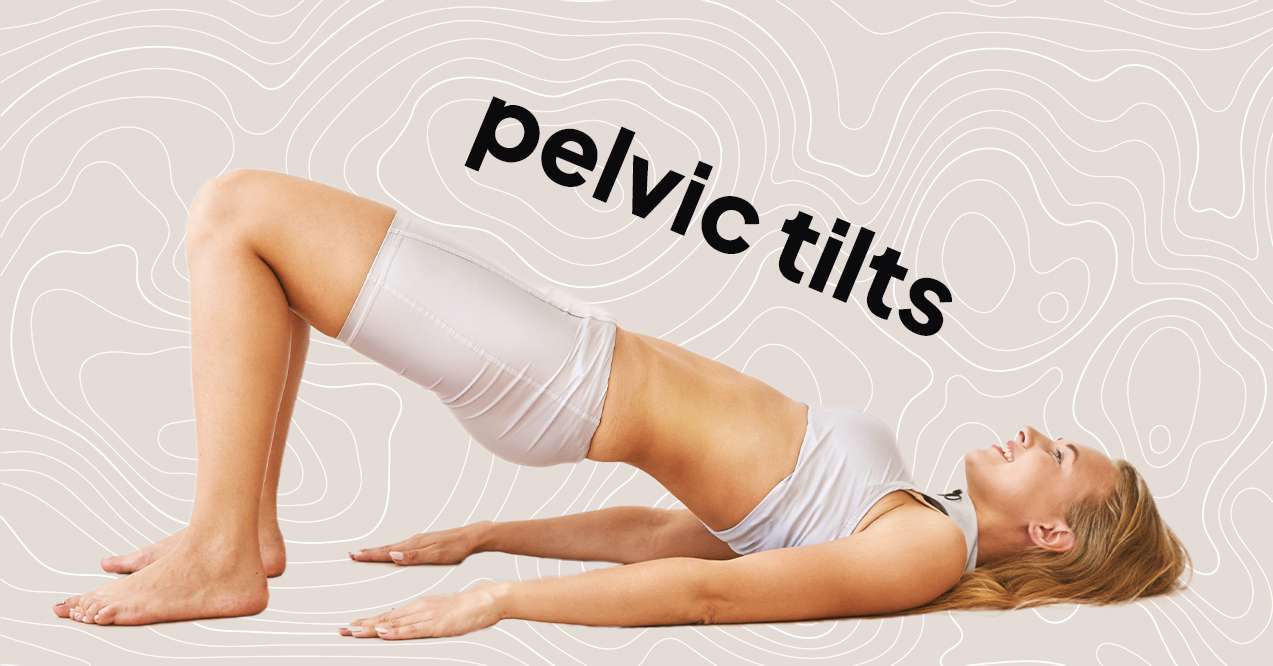
Pelvic tilts[13] are a gentle yet effective exercise for engaging and releasing the lower back and pelvic muscles. By regularly performing pelvic tilts, individuals can enhance their pelvic mobility, which contributes to better posture and spinal alignment. This exercise also strengthens the core muscles, which are vital for supporting the lower back and reducing the likelihood of pain and discomfort. The controlled movement and focus on core engagement make pelvic tilts a valuable practice for those looking to alleviate lower back issues and improve overall spinal health.
Pelvic Tilts Instructions:
- Starting Position – Lie on your back with your knees bent and feet flat on the floor, hip-width apart. Keep your arms by your sides with palms facing down.
- Engage Your Core – Take a deep breath in and, as you exhale, gently engage your abdominal muscles by pulling your belly button towards your spine.
- Tilt Your Pelvis – While keeping your core engaged, gently tilt your pelvis towards your ribcage, flattening your lower back against the floor. Avoid lifting your hips off the floor.
- Hold and Release – Hold this position for a few seconds, then slowly return to the starting position as you inhale.
- Repeat – Perform this movement slowly and gently for several repetitions, maintaining a rhythmic pattern with your breath.
Modified Pelvic Tilts for Elderly Instructions:
- Starting Position – Sit in a sturdy chair with your feet flat on the floor, hip-width apart. Keep your back straight and hands on your thighs for stability.
- Engage Your Core – Breathe in deeply. As you exhale, gently pull your belly button towards your spine, engaging your abdominal muscles without straining.
- Tilt Your Pelvis – While keeping your core engaged, gently tilt your pelvis forward, curving your lower back slightly. Then, tilt your pelvis backward, flattening your lower back. Ensure the movement is controlled and comfortable.
- Hold and Release – Hold each tilt for a few seconds, then return to a neutral, straight spine position.
- Repeat – Perform this movement slowly for several repetitions, coordinating with your breath. Focus on smooth, gentle tilts without any jerky movements.
4. Shoulder Rolls
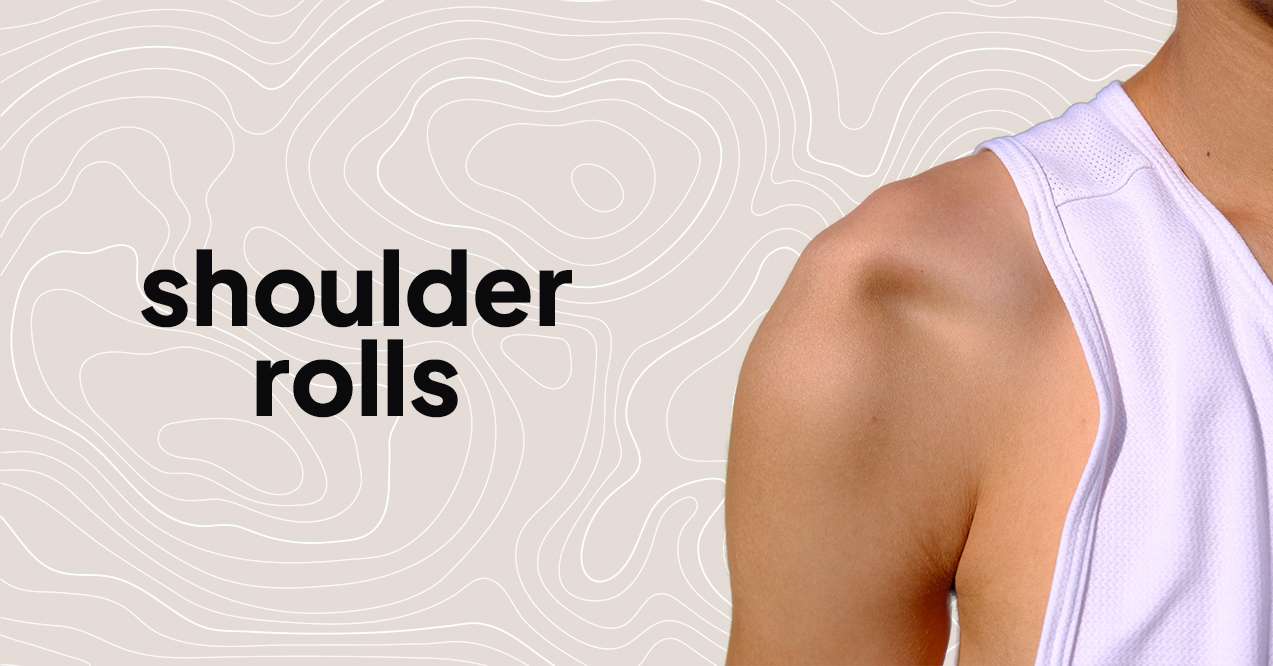
Shoulder rolls[14] are an effective exercise for relieving tension in the shoulder and neck area. Research indicates that controlled shoulder movements can help to alleviate muscle tightness and improve range of motion in these regions. This exercise encourages relaxation of the shoulder muscles, which often hold tension due to poor posture, stress, or prolonged sitting.
Regular practice of shoulder rolls can contribute to better shoulder mobility, reduced neck stiffness, and overall comfort in the upper body. It’s a simple yet beneficial exercise that can be easily incorporated into daily routines, especially for those who spend long hours at a desk or in front of a computer.
Shoulder Rolls Instructions:
- Starting Position – Sit or stand in a comfortable position with your back straight and arms relaxed by your sides. Keep your feet flat on the floor if seated.
- Inhale and Lift – Inhale deeply and slowly lift your shoulders up towards your ears, engaging the muscles in your upper back and shoulders.
- Roll Backward – As you exhale, gently roll your shoulders backward, drawing them down and back in a circular motion. Imagine drawing circles with your shoulders.
- Roll Forward – After a few backward rolls, switch directions. Lift your shoulders up, then roll them forward and down in a controlled circular motion.
- Relax and Repeat – Relax for a moment between each roll. Repeat this sequence for several repetitions, alternating between rolling backward and forward.
5. Cat-Cow Stretch (Marjaryasana-Bitilasana)
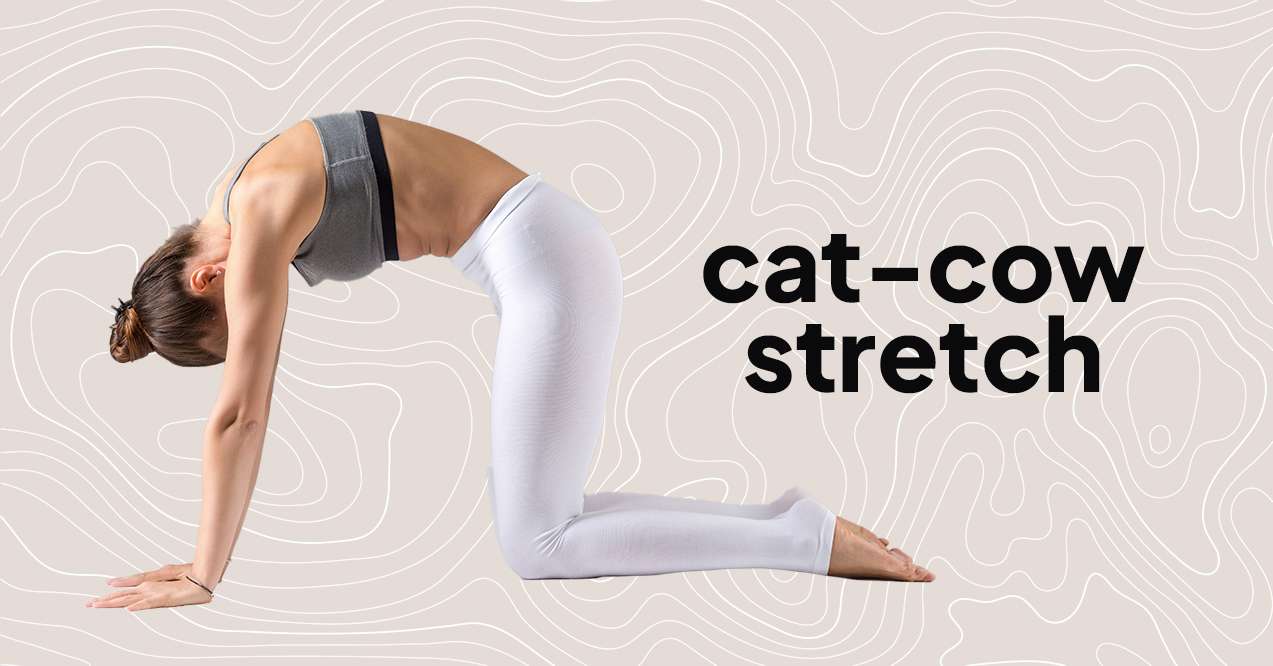
The Cat-Cow Stretch is known for its ability to improve spine flexibility and aid in stress relief. It’s particularly beneficial for pregnant women[15], as indicated in studies, offering a gentle way to keep the spine flexible and alleviate back tension. The modified version for the elderly or those with limited mobility provides similar benefits, making it accessible to a wider range of individuals. Regular practice can contribute to a healthier, more flexible spine and overall stress reduction.
Cat-Cow Stretch (Marjaryasana-Bitilasana) Instructions:
- Starting Position – Begin on your hands and knees in a tabletop position. Ensure your knees are directly below your hips and your wrists, elbows, and shoulders are in line and perpendicular to the floor. Keep your head in a neutral position, eyes looking at the floor.
- Cow Pose (Bitilasana) – As you inhale, lift your sitting bones and chest toward the ceiling, allowing your belly to sink toward the floor. Lift your head to look straight forward.
- Cat Pose (Marjaryasana) – As you exhale, round your spine toward the ceiling, making sure to keep your shoulders and knees in position. Release your head toward the floor, but don’t force your chin to your chest.
- Repeat – Inhale, coming back into Cow Pose, and then exhale as you return to Cat Pose. Repeat for 10-20 breaths, moving smoothly between the two poses.
Instructions for Elderly or Those with Limited Mobility:
- Starting Position – Sit in a chair with your feet flat on the ground and hands on your knees.
- Cow Pose (Modified) – Inhale and arch your back slightly, sticking your chest out and looking up towards the ceiling.
- Cat Pose (Modified) – Exhale and round your back, tucking your chin towards your chest and pulling your belly in.
- Repeat – Continue alternating between the modified Cow and Cat poses with each breath for several cycles.
6. Legs-Up-The-Wall Pose (Viparita Karani)
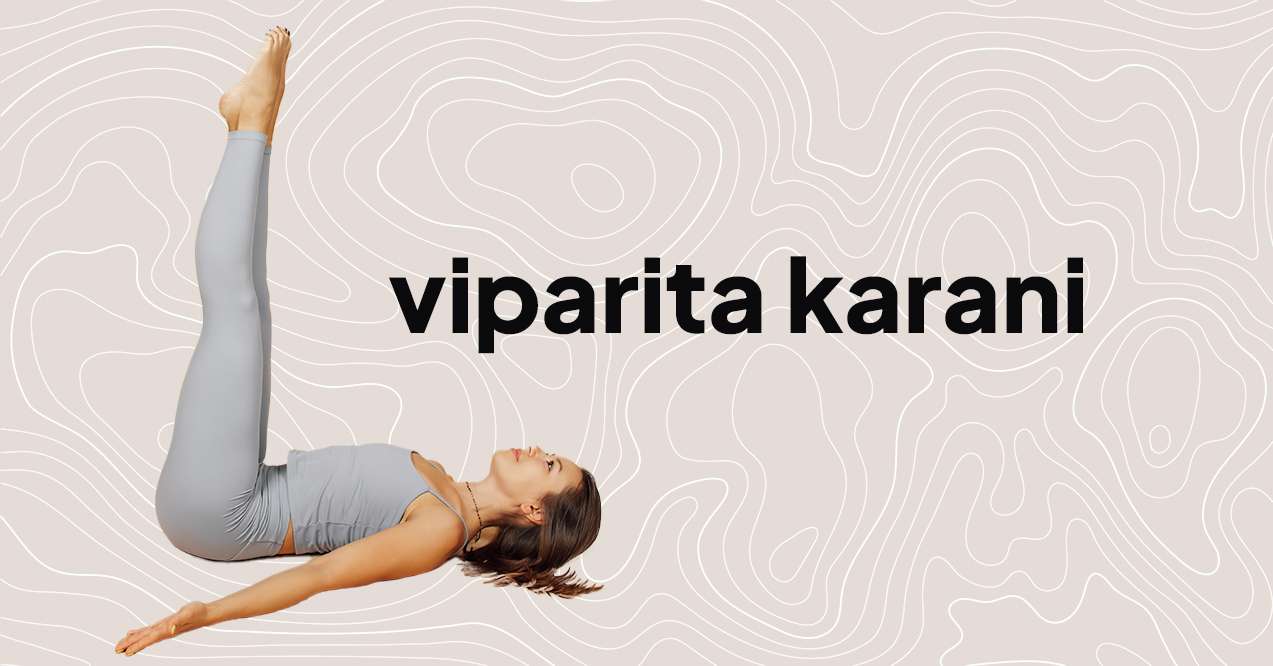
Legs-Up-The-Wall Pose is a restorative yoga posture known for reducing pelvic congestion[16] and improving circulation, as supported by research. It’s a gentle inversion that allows gravity to aid in venous drainage and lymphatic circulation, providing relief from swollen ankles, varicose veins, and tired legs. The modified version for the elderly or those with limited mobility offers a more accessible way to achieve similar benefits, focusing on elevation and relaxation. Regular practice of this pose can contribute to overall vascular health and a sense of physical rejuvenation.
Legs-Up-The-Wall Pose (Viparita Karani) Instructions:
- Prepare Your Space – Place a yoga mat or a blanket perpendicular to a wall. Have a cushion or folded towel nearby for support.
- Starting Position – Sit with your right side against the wall. Lean back as you swing your legs up onto the wall. Your buttocks can either be against the wall or a few inches away, depending on what’s comfortable for you.
- Adjust Your Position – Lower your back to the floor and lie down. Ensure your body is in a straight line and your legs are comfortably resting against the wall. Place the cushion or folded towel under your lower back for support if needed.
- Relax – Let your arms rest by your sides, palms facing up. Close your eyes and focus on your breath. Stay in this pose for 5-10 minutes, allowing gravity to aid in relaxation and circulation.
- To Release – Gently push yourself away from the wall and slide your legs down to the side. Sit up slowly and take a moment before standing up.
Instructions for Elderly or Those with Limited Mobility:
- Prepare Your Space – Use a chair or couch instead of a wall. Sit close to the edge of the chair.
- Lift Your Legs – Gently lift your legs and place them on the seat of another chair or a cushioned surface directly in front of you.
- Relax – Lean back in the chair or add cushions for support. Rest your hands on your lap or by your sides. Close your eyes and breathe deeply, maintaining this position for several minutes.
7. Mindful Walking

Mindful walking concludes our somatic workout plan. It combines the physical benefits of walking with the mental focus of meditation.
Research indicates[17] that this practice not only improves mood and reduces anxiety but also has positive effects on heart health. Mindful walking encourages a state of active, open attention to the present, which can help break the flow of negative thoughts and sensations that often accompany stress and anxiety.
Additionally, the physical activity involved in walking supports overall cardiovascular health and fitness. Regular practice can lead to improved mental well-being and physical health.
Mindful Walking Instructions:
- Start with Intention – Begin by standing still for a moment. Set an intention for your walk, focusing on being present and aware.
- First Steps – Start walking at a natural, slow pace. Concentrate on the sensation of your feet touching the ground with each step.
- Engage Your Senses – As you walk, engage your senses fully. Notice the sights, sounds, smells, and textures around you. Feel the air against your skin.
- Breathing – Sync your breathing with your steps if possible. For instance, inhale for three steps and exhale for three steps.
- Mindful Observation – Observe your surroundings without judgment. Notice the beauty in the simple things around you.
Somatic Exercises for Specific Needs
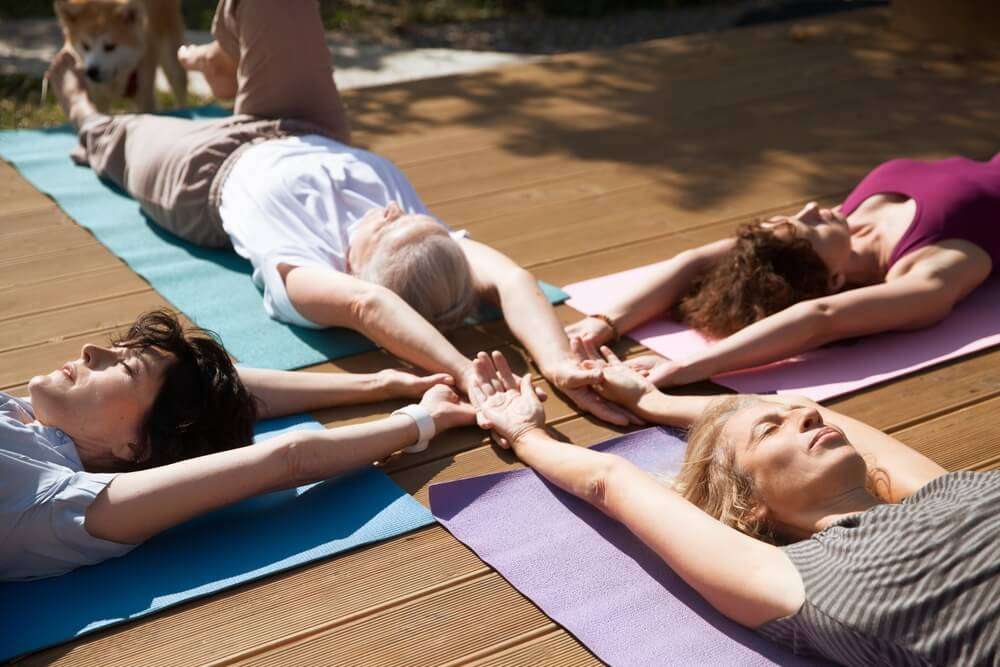
Embark on a journey with somatic exercises, a versatile and empowering tool, uniquely adaptable to your body’s specific needs. Imagine gently guiding your body through movements that whisper relief to areas haunted by chronic pain, or using soothing breathwork as a calming balm to ease the whirlwind of anxiety. Picture a serene evening routine, where body scanning or soft yoga ushers in a night of blissful sleep.
For our cherished elderly, these exercises morph into gentle, chair-based movements or modified stretches that respect the wisdom of age, nurturing flexibility and vitality. Expecting mothers can find solace in tailored routines, offering not just physical ease but a deep, nurturing connection with the life blossoming within.
This is the power of personalizing somatic exercises to your health conditions and life stages. It’s a dance where you lead, and your body follows, revealing its limits and capabilities in a harmonious rhythm. Embrace this path of self-discovery and self-care, where every movement and breath is a step towards a fmore balanced, pain-free, and tranquil you, irrespective of age or life’s special chapters.
This journey is yours, and while these words light the way, they’re not a substitute for professional medical advice. For those paths less traveled, such as during pregnancy or in advanced age, seek the guidance of healthcare professionals to ensure a safe and beneficial exercise experience.
Key Takeaways
Somatic exercises are not just a fitness routine – they are a pathway to a harmonious mind-body connection. Their effectiveness and versatility make them suitable for people of all ages and various health needs. We encourage you to weave our free somatic exercises into your daily routine, embracing the gentle yet powerful journey towards a healthier, more balanced you.
- Stress Reduction – Techniques like breathwork and grounding exercises reduce stress and promote mental calmness.
- Pain Relief – Targeted movements help alleviate chronic pain by re-educating the neuromuscular system.
- Improved Flexibility and Mobility – Enhances bodily movements and reduces stiffness through mindful stretching.
- Enhanced Body Awareness – Develops a deeper understanding of bodily sensations, leading to improved posture and movement.
- Better Posture – Regular practice leads to a more aligned and balanced body posture.
- Reduction in Anxiety and Depression Symptoms – Mind-body integration through these exercises helps in managing mental health challenges.
- Improved Sleep Quality – Relaxation techniques within somatic exercises promote deeper and more restorative sleep.
- Variety of Techniques – Includes diaphragmatic breathing, grounding exercises, pelvic tilts, shoulder rolls, Cat-Cow stretch, Legs-Up-The-Wall Pose, and Mindful Walking.
FAQs
Somatic exercises for stress are mindful movement techniques focusing on body awareness and relaxation. They include practices like deep breathing, gentle stretching, and body scanning, which help release muscular tension and calm the mind, effectively reducing stress levels and enhancing mental clarity and emotional balance.
Yoga combines physical postures, breathing techniques, and meditation, focusing on spiritual and physical wellness. Somatic exercises, on the other hand, specifically target the mind-body connection, emphasizing internal awareness and the release of chronic muscular tension to improve movement efficiency and reduce physical discomfort, with a more singular focus on bodily sensation.
Somatic exercises for trauma release involve gentle, mindful movements and breathing techniques that help release stored tension and emotions in the body. These practices focus on reconnecting with the body, regulating the nervous system, and gradually releasing the physical manifestations of trauma, fostering healing and emotional resilience.
Resources
[1] Meehan, E., & Carter, B. (2021). Moving with Pain: What principles from somatic practices can offer to people living with chronic pain. Frontiers in Psychology, 11. https://doi.org/10.3389/fpsyg.2020.620381
[2] Kuhfuß, M., Maldei, T., Hetmanek, A., & Baumann, N. (2021). Somatic experiencing – effectiveness and key factors of a body-oriented trauma therapy: a scoping literature review. European Journal of Psychotraumatology, 12(1). https://doi.org/10.1080/20008198.2021.1929023
[3] Weitz, N., & Opre, A. (2022). Combining Dance/Movement Therapy with Cognitive Behavioral Therapy in Treatment of Children with Anxiety Disorders: Factors Explaining Therapists’ Attitudes. American Journal of Dance Therapy, 44(2), 186–209. https://doi.org/10.1007/s10465-022-09369-y
[4] Alnawwar, M. A., Alraddadi, M. I., Algethmi, R. A., Salem, G. A., Salem, M., & Alharbi, A. (2023). The Effect of Physical activity on sleep quality and sleep Disorder: A Systematic review. Cureus. https://doi.org/10.7759/cureus.43595
[5] Tang, Y., Jiang, C., & Tang, R. (2017). How Mind-Body Practice Works—Integration or separation? Frontiers in Psychology, 8. https://doi.org/10.3389/fpsyg.2017.00866
[6] Engelhard, E. S., Pitluk, M., & Elboim-Gabyzon, M. (2021). Grounding the connection between psyche and SOMA: Creating a reliable observation tool for grounding assessment in an adult population. Frontiers in Psychology, 12. https://doi.org/10.3389/fpsyg.2021.621958
[7] Zaccaro, A., Piarulli, A., Laurino, M., Garbella, E., Menicucci, D., Neri, B., & Gemignani, A. (2018). How Breath-Control Can Change Your Life: A systematic review on Psycho-Physiological correlates of slow breathing. Frontiers in Human Neuroscience, 12. https://doi.org/10.3389/fnhum.2018.00353
[8] Gibson, J. (2019). Mindfulness, Interoception, and the Body: a Contemporary perspective. Frontiers in Psychology, 10. https://doi.org/10.3389/fpsyg.2019.02012
[9] Munzert, J., & Krüger, B. (2018). Task-Specificity of muscular responses during motor imagery: Peripheral Physiological Effects and the Legacy of Edmund Jacobson. Frontiers in Psychology, 9. https://doi.org/10.3389/fpsyg.2018.01869
[10] Zou, L., Sasaki, J. E., Wei, G., Huang, T., Yeung, A., Neto, O. B., Chen, K. W., & Hui, S. S. (2018). Effects of Mind–Body Exercises (Tai Chi/Yoga) on Heart Rate Variability Parameters and Perceived Stress: A Systematic Review with Meta-Analysis of Randomized Controlled Trials. Journal of Clinical Medicine, 7(11), 404. https://doi.org/10.3390/jcm7110404
[11] Ma, X., Yue, Z. Q., Gong, Z. Q., Zhang, H., Duan, N. Y., Shi, Y., Wei, G. X., & Li, Y. F. (2017). The effect of diaphragmatic breathing on attention, negative affect and stress in healthy adults. Frontiers in Psychology, 8. https://doi.org/10.3389/fpsyg.2017.00874
[12] Sinatra, S. T., Sinatra, D. S., Sinatra, S. W., & Chevalier, G. (2023). Grounding – The universal anti-inflammatory remedy. Biomedical journal, 46(1), 11–16. https://doi.org/10.1016/j.bj.2022.12.002
[13] Takaki, S., Kaneoka, K., Okubo, Y., Otsuka, S., Tatsumura, M., Shiina, I., & Miyakawa, S. (2016). Analysis of muscle activity during active pelvic tilting in sagittal plane. Physical Therapy Research, 19(1), 50–57. https://doi.org/10.1298/ptr.e9900
[14] Park, S., Choi, Y., Lee, J., & Kim, Y. (2013). Effects of shoulder stabilization exercise on pain and functional recovery of shoulder impingement syndrome patients. Journal of Physical Therapy Science, 25(11), 1359–1362. https://doi.org/10.1589/jpts.25.1359
[15] Kim, S., & Lee, Y. (2022). Effectiveness of yoga training programs to reduce depression and improve resilience of single mothers. Journal of Exercise Rehabilitation, 18(2), 104–109. https://doi.org/10.12965/jer.2244110.055
[16] Effect of certain yogic asanas on the pelvic congestion and it’s anatomy. (1984, October 1). PubMed. https://pubmed.ncbi.nlm.nih.gov/22557465/
[17] Shi, L., Welsh, R. S., Lopes, S., Rennert, L., Chen, L., Jones, K. O., Zhang, L., Crenshaw, B., Wilson, M. G., & Zinzow, H. M. (2019). A pilot study of mindful walking training on physical activity and health outcomes among adults with inadequate activity. Complementary Therapies in Medicine, 44, 116–122. https://doi.org/10.1016/j.ctim.2019.03.009
Advertisement. This site offers health, wellness, fitness and nutritional information and is designed for educational purposes only. You should not rely on this information as a substitute for professional medical advice, diagnosis, or treatment. If you have any concerns or questions about your health, you should always consult with a physician or other health-care professional. Do not disregard, avoid or delay obtaining medical or health related advice from your health-care professional because of something you May have read on this site. The use of any information provided on this site is solely at your own risk.
Popular Posts
Recent Posts
Does Creatine Expire and Lose Its Effectiveness?
July 17, 2024
Should You Take Pre Workout Before Running?
July 11, 2024
What Are the Best Herbs for Muscle Recovery?
June 27, 2024
Can You Drink Protein Shakes Without Working Out?
June 20, 2024

